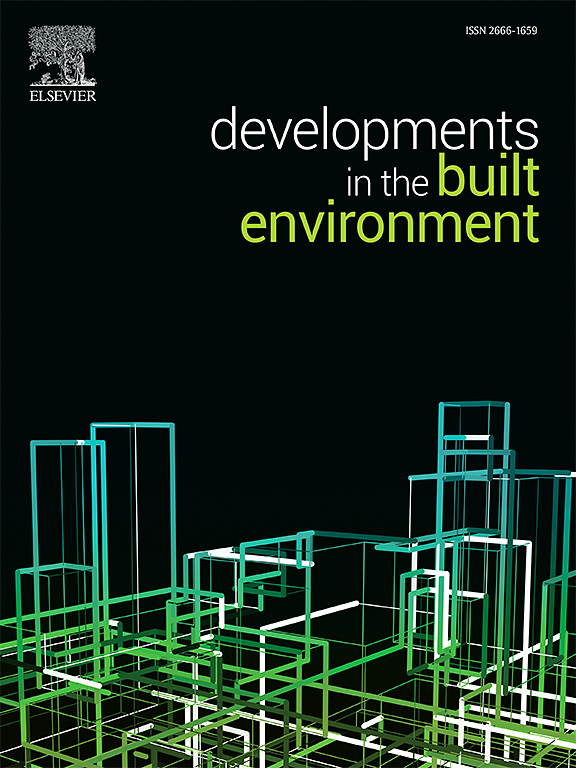Multiphysical non-destructive evaluation of sustainable sediment-based geopolymer CEB
IF 6.2
2区 工程技术
Q1 CONSTRUCTION & BUILDING TECHNOLOGY
引用次数: 0
Abstract
In this study, new Compressed Earth Blocks (CEB) materials are developed from dredged sediments with optimizing mix proportions and geopolymerization. They are evaluated through multiphysical Non-Destructive Testing (NDT) to investigate their electrical impedance, dielectric permittivity and ultrasonic pulse velocity. The effects of compaction pressure, additives (hemp and flax shives and wood chips) and geopolymerization are analyzed, in addition to tracking the drying process at ambient conditions. The results show that NDT effectively assesses CEB composition, with permittivity and impedance revealing moisture levels, which are critical for ensuring durability. Non-stabilized CEB show increased density with compaction pressure rising from 2 to 10 MPa, while dielectric permittivity increases from 3 to 4.5 under ambient conditions. As for fiber-reinforced CEB, they show a good distribution of fibers in the material and a favored orientation, perpendicular to compaction. Similarly to non-stabilized CEB, they exhibit a resistivity ranging from 20 to 50 Ω m. Dry-state geopolymer CEB show the highest resistivity values and fastest ultrasonic wave speeds (up to 2 km/s), improving with higher activator content and density.
可持续沉积基地聚合物CEB的多物理点无损评价
在这项研究中,通过优化混合比例和地聚合,从疏浚的沉积物中开发出新的压缩土块(CEB)材料。通过多物理点无损检测(NDT)来评估它们的电阻抗、介电常数和超声脉冲速度。分析了压实压力、添加剂(大麻和亚麻片和木屑)和地聚合的影响,并跟踪了在环境条件下的干燥过程。结果表明,无损检测有效地评估了CEB的组成,通过介电常数和阻抗揭示了湿度水平,这是确保耐久性的关键。常温条件下,非稳定CEB的密度随压实压力从2 MPa增加到10 MPa而增加,介电常数从3增加到4.5。对于纤维增强的CEB,它们表现出良好的纤维在材料中的分布和有利的方向,垂直于压实。与非稳定的CEB类似,它们的电阻率范围为20至50 Ω m。干态地聚合物CEB具有最高的电阻率值和最快的超声波速度(高达2 km/s),随着活化剂含量和密度的增加而提高。
本文章由计算机程序翻译,如有差异,请以英文原文为准。
求助全文
约1分钟内获得全文
求助全文
来源期刊

Developments in the Built Environment
Multiple-
CiteScore
7.40
自引率
1.20%
发文量
31
审稿时长
22 days
期刊介绍:
Developments in the Built Environment (DIBE) is a recently established peer-reviewed gold open access journal, ensuring that all accepted articles are permanently and freely accessible. Focused on civil engineering and the built environment, DIBE publishes original papers and short communications. Encompassing topics such as construction materials and building sustainability, the journal adopts a holistic approach with the aim of benefiting the community.
 求助内容:
求助内容: 应助结果提醒方式:
应助结果提醒方式:


